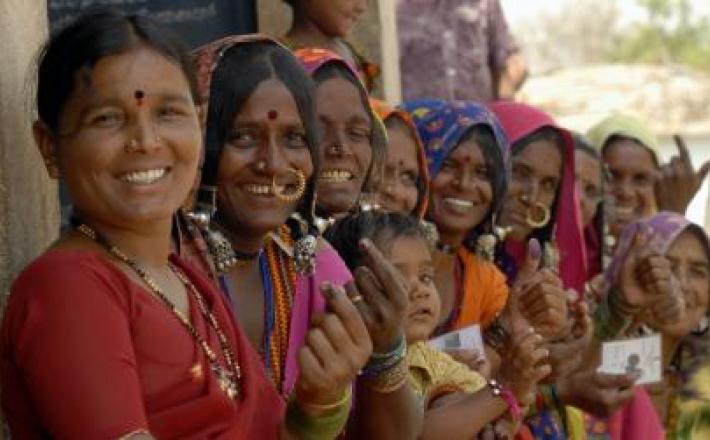Indian women are voting more than ever. Will they change Indian society?
Source: Carnegie Endowment for International Peace
Are Indian women voting at higher rates than before?
Women in India are casting their ballots more frequently, and in greater numbers. Women’s turnout has actually been higher than that of men in two-thirds of India’s state elections. This is a remarkable turn of events in a deeply patriarchal, conservative society.
Why is this so surprising?
Men in India have always turned out to vote in larger numbers than women, as far back as the data goes. As recently as 2004, men held an 8.4 percentage-point turnout advantage over women in national elections. But by 2014, that gap had shrunk to just 1.8 percentage points.
How many more women are running as candidates compared to before?
The number of female candidates has gone up, but there is a long way to go.
In 1962, the first general election for which there is data on gender, a paltry 3.7 percent of candidates were women. This figure stayed roughly the same until 1991. In the 1990s, the proportion of women running for office began to rise, thanks to greater pressure on political parties to choose female candidates.
In 2014, just over 8 percent of candidates in parliamentary races were women. This is, at once, a big improvement and yet a tiny proportion in absolute terms.
Click here to read the full article published by Carnegie Endowment for International Peace on 8 November 2018.

Are Indian women voting at higher rates than before?
Women in India are casting their ballots more frequently, and in greater numbers. Women’s turnout has actually been higher than that of men in two-thirds of India’s state elections. This is a remarkable turn of events in a deeply patriarchal, conservative society.
Why is this so surprising?
Men in India have always turned out to vote in larger numbers than women, as far back as the data goes. As recently as 2004, men held an 8.4 percentage-point turnout advantage over women in national elections. But by 2014, that gap had shrunk to just 1.8 percentage points.
How many more women are running as candidates compared to before?
The number of female candidates has gone up, but there is a long way to go.
In 1962, the first general election for which there is data on gender, a paltry 3.7 percent of candidates were women. This figure stayed roughly the same until 1991. In the 1990s, the proportion of women running for office began to rise, thanks to greater pressure on political parties to choose female candidates.
In 2014, just over 8 percent of candidates in parliamentary races were women. This is, at once, a big improvement and yet a tiny proportion in absolute terms.
Click here to read the full article published by Carnegie Endowment for International Peace on 8 November 2018.